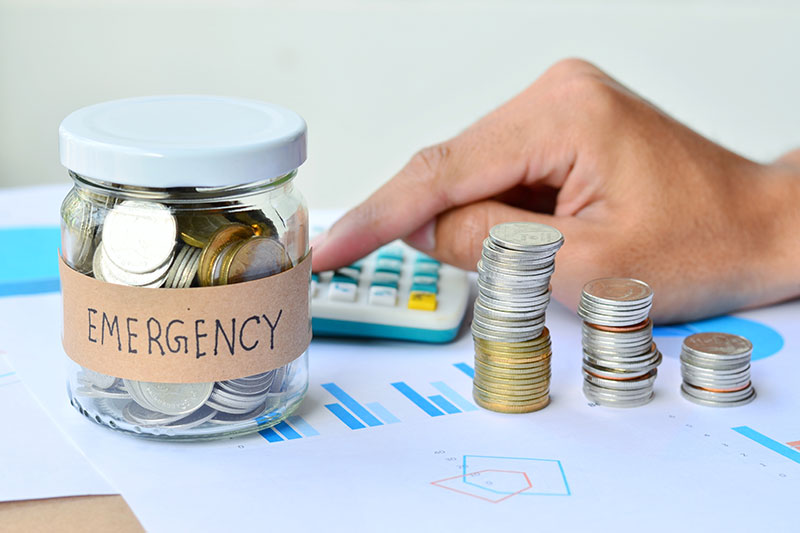5 MinsFeb 21, 2022
The COVID-19 pandemic taught us that the future is uncertain and we should be financially prepared. It reinforced the need to hold an adequate Emergency Fund or a contingency fund to deal with exigencies, such as layoffs, pay cuts, medical emergencies,
and so on. Holding an emergency fund is based on the premise: Hope for the best and be prepared for the worst. This is because life often throws a curveball at us.

Holding less amount as a contingency reserve
It is tough to put a figure to the financial impact of an unforeseen event. Hence, there is a tendency to decide the amount on an ad hoc basis. But then you may end up dipping
into funds set aside to meet specific goals to meet emergency needs. Or you may be compelled to borrow money.
As a thumb rule, your Emergency Fund should be 3 to 6 months of your regular monthly unavoidable expenses such as household expenses, EMIs, insurance premium, etc. So, if monthly expenses are Rs 40,000, going by the above formula, your Emergency
Fund should be: Rs 40,000 x 6 months = Rs 2.4 lakh. To this amount, you may add another 5%-10% for a medical emergency if your family members have a medical history. Also, consider the health insurance cover you hold.
Choosing wrong investment avenues
Sometimes, the Emergency Fund may be invested in risky wealth-creating investment avenues (viz. equity mutual funds, debt mutual funds, etc). Or it may be parked in avenues that offer
safety of returns but with a longer lock-in period (viz. Public Provident Fund, National Savings Certificate, Kisan Vikas Patra, etc).
[Also Read: Why You Should Build an Emergency Fund]
When you park money for emergency needs, ensure high liquidity and safety of capital. You could keep your funds in a mix of avenues in the right proportion––say 50% in a Savings Account,
30% in a Fixed Deposit, and 20% in a Liquid Fund/Overnight Fund.
Using the money for non-emergencies
There could be instances when you may be tempted to utilise the money set aside for an emergency for discretionary spending. But if an emergency were to occur, it will weigh down on your
finances, if you are not prepared. To avoid this, use your contingency fund only for an emergency. Don’t use this fund for an exotic vacation, upgrading your gadgets, car, etc.
Not restoring the emergency fund after use
After utilising the emergency fund -- whether in part or full -- you must quickly build it back and restore it to an adequate level on priority. For this, if required you may
need to cut down on discretionary expenses, save more, monetise existing assets, and utilise any windfall income.
Not reviewing the emergency fund
You cannot keep the emergency fund static. Based on what your situation is, reviewing the emergency fund is necessary. For example, events such as marriage, the birth of your child, divorce,
increase in debt, instability in your job, etc, have a bearing on your finances. If you do not review the Emergency Fund regularly, it may prove insufficient.
Hold an adequate amount as Emergency Fund that would offer you the required cushion, the peace of mind, and avoid endangering your financial wellbeing. Visit us to use Axis Bank’s Emergency Fund Calculator to know how much you will need to keep aside in your fund.
Disclaimer: This article has been authored by PersonalFN, a Mumbai based Financial Planning and Mutual Fund research firm. Axis Bank doesn't influence any views of the author in any way. Axis Bank & PersonalFN shall not be responsible for any direct / indirect loss or liability incurred by the reader for taking any financial decisions based on the contents and information. Please consult your financial advisor before making any financial decision.
















